Out of Sight took a depressed leading man still reeling from his ill-fated adventures in the batsuit, a director in the midst of an existential crisis, and a leading woman on the verge of pop music megastardom and turned them into a perfectly paired trio. In the end, they made one of the landmark movies of the 90s. We just didn't realize how important it was at the time.
A roguish, almost achingly handsome man sits across from an elegant woman, the pair exchanging flirtations with the effortless charm of Bogey and Bacall. They know each other, but he's surprised her, seemingly emerging out of thin air to sit down at the table with her regardless of who might be watching. Theirs is a doomed romance, of course. She's on the straight and arrow, he's a career criminal, but that just makes the attraction all the more intense. We lean back and drink in the cinematic joy of watching gorgeous people dance around each other without ever leaving their seats.
The man? George Clooney.
The woman? Not Julia Roberts.
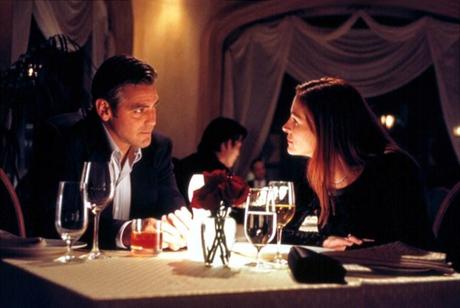
If you've seen Ocean's 11, you probably thought I was describing Clooney and Roberts' iconic first scene together (pictured above) where he shows up to win her back and ultimately gets interrupted by Andy Garcia's slicked-back baddie. However, a similar flirtatious scene plays out in an earlier Clooney-Soderbergh collaboration, 1998's Out of Sight. The woman in that movie happens to be Jennifer Lopez, the very same Jennifer Lopez now getting the best reviews of her career for STX's surprisingly amazing Hustlers. This could be Lopez's Oscar movie, the critics say. Easily her best work since - and possibly even better than - Out of Sight, others have argued.
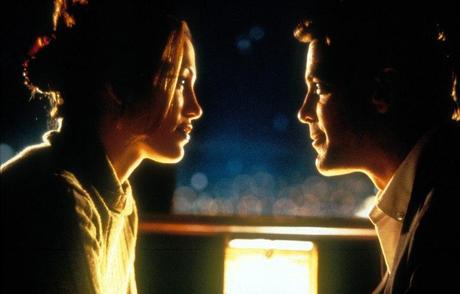
Having never seen Out of Sight, I took all of this as a challenge to right that wrong, and, thankfully, it was just added to HBO Now. Having always heard Out of Sight characterized as one of the most overlooked gems of the 90s and featuring one of cinema's all-time sexiest non-sex scenes, I went in knowing it's based on an Elmore Leonard novel and Clooney and Lopez eventually end up in a car trunk together. Beyond that, I was clueless.
What I got was, effectively, a trial run for the effortless cool and breezy charm Clooney and Soderbergh would later bring to Ocean's 11. Plus, since I'm a bit of an auteurist I looked into the film's production history and found some wild Soderbergh stories. So, let's unpack all of that in order, praising the film first and then explaining exactly how it got made and why it's so important.
Why It's Great
Roger Ebert's take:"For Steven Soderbergh, Out of Sight is a paradox. It's his best film since sex, lies, and videotape a decade ago, and yet at the same time, it's not what we think of as a Soderbergh film-detached, cold, analytical. It is instead the first film to build on the enormously influential Pulp Fiction instead of simply mimicking it. It has the games with time, the low-life dialogue, the absurd violent situations, but it also has its own texture. It plays like a string quartet written with words instead of music, performed by sleazeballs instead of musicians."
The AVClub's Take:
"Although conflict is less central to Out Of Sight than in the Ocean's trilogy, it similarly comes down to treachery versus trickery, with antagonists who represent the antithesis of the movie's artistry: They are over-armed, greedy, fractious, and don't know how to take their time. What makes its unlikely love story work is that, like Out Of Sight itself, it's ultimately about pleasure."
It's instructive that Ebert would invoke Pulp Fiction because Out of Sight definitely feels like a film in conversation with other movies and moviemakers, specifically Soderbergh talking to Tarantino, but they're not talking about just Pulp Fiction. No, they're primarily comparing notes on Jackie Brown, Tarantino's own Elmore Leonard adaptation which came out six months earlier. The two films actually share a character - FBI agent Ray Nicolette, played in both by Michael Keaton.
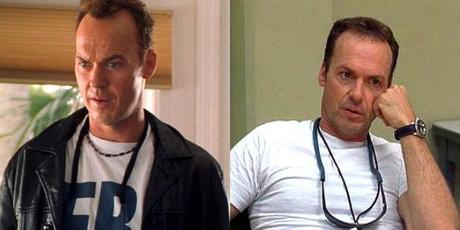 Keaton's cameo was reportedly the result of a contractual compromise allowing both films to use the same character.
Keaton's cameo was reportedly the result of a contractual compromise allowing both films to use the same character. 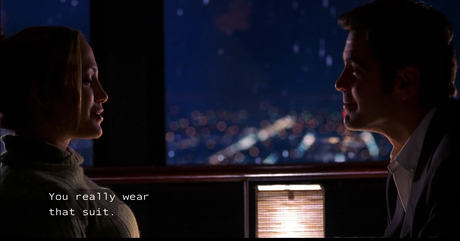
All of that works for Out of Sight in a bells and whistles kind of way, attractive window dressing for sure. However, strip all of that away and you have a simple story about a federal marshall, Karen Sisco (Lopez), who always falls for the wrong men and a bank robber, Jack Foley (Clooney), who sure knows how to wear a suit and would rather not grow old in prison. He takes her hostage after a prison break. They get to know each other while hiding in the trunk of her car, his hand not-so-innocently resting on her thigh. Next thing you know, she's having outrageous sex dreams about him, and he's risking life and limb just to talk to her.
From their initial, Raising Arizona-esque first encounter where she points a shotgun at him as he emerges from a hole on the other side of a prison fence to their final standoff, they both become preoccupied with the following question: what would happen if they had met under different circumstances? In another life, they could have been lovers, but why not this life?
It's still an Elmore Leonard story meaning there's plenty of Miami scenery, characters who talk around their problems instead of at them, pop culture references ( Network and Bonnie and Clyde are but two of the films referenced by name), and criminal scumbag machinations to cycle through. Also, as a mid-90s Hollywood movie, there's a wildly eclectic ensemble - Luis Guzman, Don Cheadle, Steve Zahn, Ving Rhames, Albert Brooks with a hilariously horrible toupe, Dennis Farina, early era Catherine Keener as a bit of a bimbo ex in a belly shirt - around to pull focus.
However, Out of Sight is truly the Clooney/Lopez/Soderbergh show, and their chemistry combined with his wit and light experimentation - certain scenes, for example, end on freeze frames - turns Out of Sight into the rare rom-com that has both a climactic shoot-out, a unique visual identity, and a delectably satisfying love story.
How It Got Made
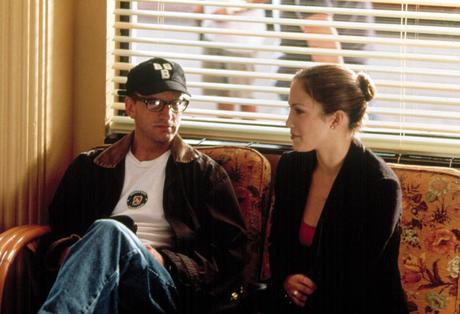
In one sense, there's nothing particularly remarkable about how Out of Sight got made. After Danny DeVito scored a big hit with Get Shorty, he had his production company, Jersey Films, buy the rights to another Elmore Leonard novel, Out of Sight, with the intent to produce it, not star in it. He then hired the screenwriter, Scott Frank, who adapted Get Shorty to do the same for Out of Sigh t. All pretty straightforward, really. Success, in Hollywood, trends toward replication. Nothing unique about that.
They bet...wrong. Despite strong reviews, Out of Sight flopped in its day ($37m domestic/$77m worldwide), a failure often attributed to Universal's half-hearted marketing. (Opening two weekends after fellow rom-com Six Days, Seven Nights and one week after the first X-Files movie didn't help.) However, Universal and Jersey Films had already moved on to developing Erin Brokovich together at that point, and they knew just who to go to for director.
[This is the part where you're supposed to think I'm about to say Steven Soderbergh]
David Fincher.
[Record scratch]
But when he passed they went straight to Soderbergh.

Hey, second choice is better than fifth. Just 18 months earlier, Soderbergh had to interview multiple times for the Out of Sight gig and ended up being their fifth choice. Those in the "no" column included: Cameron Crowe ("coming off of a DGA nomination and Jerry Maguire, [Crowe]'s obviously as cold as a blow torch" reads Soderbergh's diary from the time), Mike Newell ("less concerned about him because he just did a movie about criminals [ Donnie Brasco] and I think he will turn it down," Soderbergh wrote), Sydney Pollack (on a bit of a comeback after The Firm and Sabrina), and Ted Demme ( The Ref).
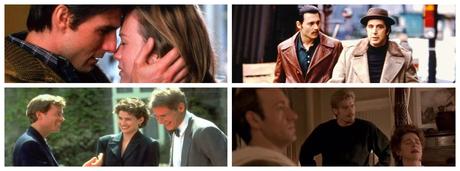 The competition's most recent work
The competition's most recent work 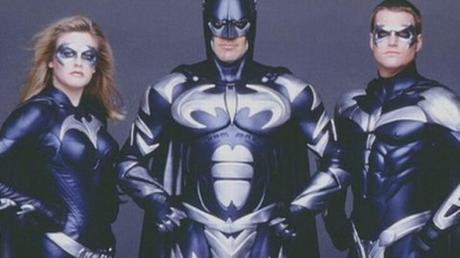 Clooney on Batman & Robin, "Up until that moment, I was an actor only concerned with finding work. After the failure of that film creatively, I understood that I needed to take control of the films I made, not just the role. My next three films were Out of Sight, Three Kings and O Brother, Where Art Thou?"
Clooney on Batman & Robin, "Up until that moment, I was an actor only concerned with finding work. After the failure of that film creatively, I understood that I needed to take control of the films I made, not just the role. My next three films were Out of Sight, Three Kings and O Brother, Where Art Thou?" Clooney needed Out of Sight to if not hit than at least prove his bonafides as a movie star, and he wasn't sure Soderbergh was the right director for the job.
You can't blame him - Soderbergh wasn't sure either.
He'd been out to sea for an entire decade. Exactly as he feared it would, 1989's sex, lies and videotape turned Soderbergh into just the latest overnight Hollywood success story gone wrong, with all of the once wide-opened doors in town now firmly closed. As an entire generation of filmmakers rode the indie wave he'd started, Soderbergh was hacking away at one flop ( Kafka) after another ( King of the Hill). Halfway through the production of his 1995 film The Underneath, he looked up and realized he was making a movie he wasn't actually interested in, yet when it failed - just $336,023 in domestic ticket sales - he pointed the finger elsewhere, telling a French interviewer:
"The times do not favor a filmmaker like me. The proof of this is in the films that are popular. I don't know where the spectators for my films are. Maybe they are home reading or watching films on video."
Shortly thereafter, he decided to change direction in his career, announcing to an interviewer in 1995, "I would like to make small-budget films that are experimental, that may not draw a large audience or no audience at all."
He wasn't wrong about that last part. His next two films- Gray's Anatomy, in which the actor Spalding Gray delivers a monologue about his eye disease, and Schizopolis, in which Soderbergh, his ex-wife, and daughter all play themselves in an improvised, highly confusing story about divorce and cults - led to mass walkouts at film festivals and "WTF is wrong with you?" missives from friends and colleagues.
Behold the Schizopolis trailer, if you dare:
Considering how personal Schizopolis was to Soderbergh - in addition to being autobiographical, it was also shot in his home town of Baton Rouge, Louisiana over 10 months and featured a crew of just 5, all of them old friends - he took its failure especially hard. When even Harvey Weinstein passed on it and walked out of a Cannes screening, Soderbergh wrote, "I really think the public will be ahead of the critics on this one, should the public ever get a chance to see it." When follow-up meetings with every indie distributor in the game resulted in zero bites, he vented, "Nobody has any fucking vision!"
If left to his own devices, that might have been the end of Soderbergh. He doubled down and plotted a sequel to Schizopolis called Neurotica and was probably on a path toward eventually packing it in and following in his father's footsteps and becoming a college professor, although maybe the type of teacher who directs documentaries or experimental films on the side with the help of his students. Bobby Newmyer, a producer who worked with the enfant terrible director on sex, lies and videotape, couldn't let that happen. Much like Oakland Raider's coach Jon Gruden talking to disgruntled wide receiver Antonio Brown, Newmyer reached out to Soderbergh and offered the following advice: You're a great filmmaker. Just make films. Stop all the bullshit.
"I was frustrated," Newmyer told Sharon Waxman for her book Rebels on the Backlot. "I kept bringing him everything in the world I had. But he had a certain disdain for mainstream Hollywood movies."
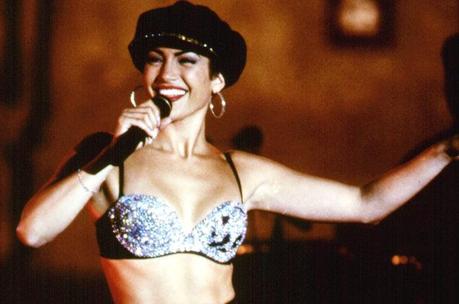
Jennifer Lopez, meanwhile, was just doing anything to earn some damn respect in town. She was a former Fly Girl who broke through - like so many others before and after her - by playing someone famous, deceased Tejano pop star Selena Quintanilla-Pérez. In-between those two gigs, she'd played a teacher ( Jack), a cop ( Money Train) and Jack Nicholson's mistress ( Blood and Wine) before turning to genre fare for some actual starring roles, such as the Stray Dogs riff U-Turn and camptastic classic Anaconda.
By 1997, Lopez already had one foot out the door. The process of making Selena reignited her passion for music and public performance and directly led to her recording an original album, 1999's triple platinum-selling On the 6. Her last act before becoming Jenny from the Block would be playing Karen Sisco, but she had to fight for it, narrowly beating out one of the big, emerging movie stars of the day for the part.
"What happened was I spent some time with [Clooney and Sandra Bullock] and they actually did have great chemistry. But it was for the wrong movie. They really should do a movie together, but it was not Elmore Leonard energy," Soderbergh later told Mr. Showbiz.
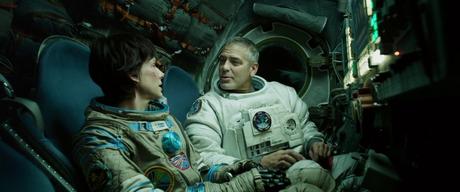 They found each other eventually
They found each other eventually To get to that point of deciding who played Karen Sisco, however, Soderbergh still had some steps left on his walk in the woods. Out of Sight wasn't really the movie he wanted to make. No, the project which made him think he might be able to operate inside the studio system again was Human Nature, a Charlie Kauffman-penned story about...well...it's Kauffman. Words never quite due him justice. Needless to say, it was the kind of project studio executives took meetings on just as an excuse to get Soderbergh in their office so they could slip him a script for something a bit more mainstream:
Human Nature eventually got made as Michel Gondry's directorial debut:
This was the strategy used by Universal's Casey Silver. The pair first met in the mid-1980s when a twentysomething Soderbergh pitched a very Fame-esque musical to TriStar. The project never got made, but they later worked together on King of the Hill. When Silver was promoted to Chairman of Universal in 1996, he knew he wanted Soderbergh for Out of Sight and that would mean humoring him about Human Nature.
It almost didn't work. Soderbergh was determined to will Human Nature into existence, funding development with money from writer-for-hire script doctor jobs and lining up David Hyde Pierce, Chris Kattan and Marisa Tomei to play the three leads. He had no idea Silver was already talking him up to Jersey Films even though no one there thought he was a good fit for Out of Sight. To make matters worse, once Silver got Soderbergh to read the script the damn fool said no, writing in his diary, "It's a terrific script, and all the people involved are good, so of course I called Casey the next day and turned it down."
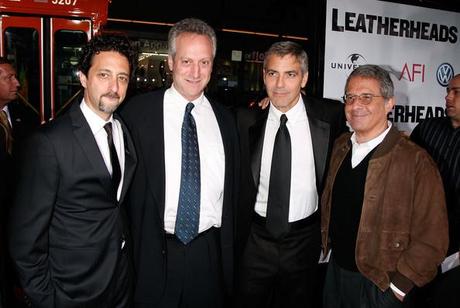 Silver, on Clooney's left, at the premiere of Leatherheads, a project Soderbergh actually kicked around for over a decade before passing it off to his pals.
Silver, on Clooney's left, at the premiere of Leatherheads, a project Soderbergh actually kicked around for over a decade before passing it off to his pals. Finally, Silver had enough. "Steven, I may be out of line," he recalls saying, "But I'm going to be honest here. You're insane. You're a fucking idiot. You love the script. I'm running the studio. The script is a go. You don't have to worry that the big bad studio is going to come in and fuck up your movie. If you're ever going to do it, do it now."
I think we know which path Soderbergh took, but it wasn't as easy as simply giving Silver a yes. He had to wait out the competition and work hard to prevent anyone from Jersey Films from ever seeing Schizopolis. When asked by one executive why he kept delaying and denying their screening requests, he bluntly admitted, "I thought you wouldn't want to hire me if you saw it."
That, or you could just make a damn fine Elmore Leonard movie with a sex scene Don't Look Now would be proud to call its own.
Why It's Important
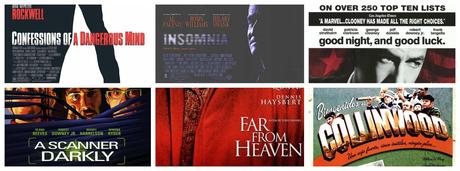 Without Out of Sight, Clooney and Soderbergh don't form Section Eight and don't co-produce all of the above movies, not to mention the Ocean's trilogy.
Without Out of Sight, Clooney and Soderbergh don't form Section Eight and don't co-produce all of the above movies, not to mention the Ocean's trilogy. Often times in film history, it's the flops that matter the most. It's not always about selling the most tickets or making everyone rich; it's about getting your work seen by all the right people so you can continue climbing up the Hollywood ladder.
That was the case for Clooney and Soderbergh on Out of Sight. As detailed in Sharon Waxman's Rebels on the Backlot, "Those who saw Out of Sight loved it, among them many Hollywood insiders. For the first time Clooney showed movie star chops, and the film instantly put Soderbergh back on the industry map." He showed the industry not only all the creative wrinkles he could bring to one of the most recognizable genres of the day, the romantic comedy, but also that he wasn't the cold, strangely aloof fella they thought they knew (or at least he wasn't always like that).
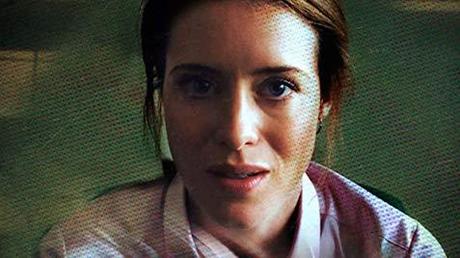 Unsane, one of two Soderbergh movies to be shot entirely on an iPhone
Unsane, one of two Soderbergh movies to be shot entirely on an iPhone Soderbergh, however, still has a lot of that Schizopolis wanderlust in him. "I think Steven is reluctant to be a successful director, and that's why he stayed independent for so long," Clooney told Waxman. "There's a part of him that still wants to be Steven Soderbergh from Baton Rouge who does what he wants and doesn't have to answer to anybody. But it's a fear any independent director has that early on they're edgy, but when they get fat and happy, the edge goes away."
The moment Soderbergh felt he was getting too fat and content - perhaps around the time of the wildly uninspired Oceans 13 in 2007 - he blew everything up again, turning back into one of the most unpredictable filmmakers in the industry. He's retired and unretired a couple of times now. He followed up one of the biggest hits of his career, 2012's Magic Mike, by demoting himself to cinematographer and editor on the sequel, 2015's Magic Mike XXL, and promoting his first assistant director to the head job. He t urned Logan Lucky into a grand experiment in equitable profit distribution, and now makes movies for theaters, HBO, Netflix, or whoever else fits his fancy. He swings back and forth from prestige TV dramas ( The Knack, The Girlfriend Experience, Mosaic) and feature-length films ( Unsane) with the ferocity of an especially wound yoyo.
Now, heading into yet another Oscar season Soderbergh has a new movie starring Meryl Streep, The Laundromat. The early word out of the film festivals isn't encouraging, but the movie will be on Netflix soon enough for all of us to decide. This is Meryl Streep we're talking about. Nominating her for an Oscar is just what the Academy does - well that and seriously slow-walking the construction process of a film history museum.
Months from now, Jennifer Lopez and Meryl Streep could be competing against each other for an Oscar. Over twenty years ago, however, Lopez just wanted some respect, Clooney needed to save his career, and Soderbergh was at risk of turning into an Avante-garde filmmaker with an audience of one. All it took to save them was Elmore Leonard and a glorious ride together in the trunk of a car.
Out of Sight is currently on HBO Now.Sources: Sharon Waxman's Rebels on the Backlot, Steven Soderbergh and Richard Lester's Getting Away With It: Or: The Further Adventures of the Luckiest Bastard You Ever Saw

Grew up obsessing over movies and TV shows. Worked in a video store. Minored in film at college because my college didn't offer a film major. Worked in academia for a while. Have been freelance writing and running this blog since 2013. View all posts by Kelly Konda

